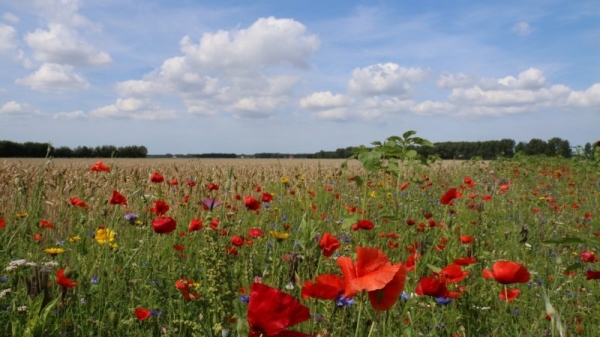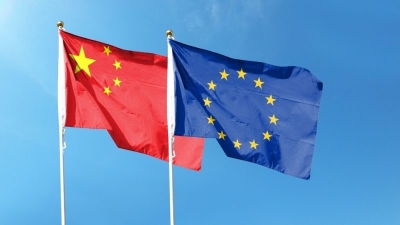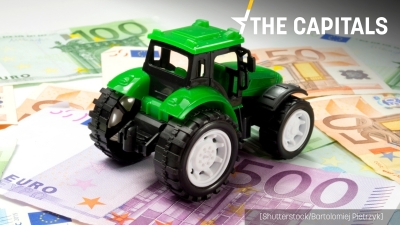Arable farming in Europe needs a systems perspective

Arable farmers in Europe face multiple challenges of which climate change is but one. Reducing mineral fertilisers and synthetic pesticides, reduce emissions, create space for nature and deliver affordable foods are others. “The real challenge for arable farmers is how to meet all these challenges simultaneously.” Three expert scientists have been asked to give their views in a keynote at the event ‘Rethinking arable farming in a changing climate‘ taking place next Thursday May 4 in Brussels.
Jørgen Olesen, one of these experts, is professor of Climate Change and Agriculture and head of department at Aarhus University (DK). It is clear that arable farmers need new levers to increase resilience of their farms in a sustainable way. ‘They need tools that help them to maintain and even increase production while simultaneously reducing the impact on environment and biodiversity.”
Olesen: “We estimate large differences in responses to climate change between Northern and Southern Europe, with yield declines in the south primarily due to increased drought, and some benefits in the north due to a longer growing season. In the short term, it is mainly the variability in rainfall and in temperature caused by more frequent extremes in weather that will affect crops severely.”
Another challenge is the competition for land. Frank Ewert, professor of Crop Science and Scientific Director of ZALF in Müncheberg (D) fears that it will increase in the coming years. Apart from land needed for other forms of energy, like solar panels, space is also needed to expand nature conservation areas. He also mentions additional pressure from society to phase out the use of synthetic pesticides and mineral fertilisers. Ewert: “We have to deal with that by reducing our dependence on them, but also by explaining even better why their use is sometimes necessary.”
Martin van Ittersum, professor of Plant Production Systems at Wageningen University (NL) adds that we should not think too lightly about the need to at least maintain food production in Europe. “If production here decreases, which is not inconceivable given the Farm-to-Fork strategy, it will have major consequences for EU consumers who will likely have to pay more for their food. Also, elsewhere in the world food prices will rise because of lower European production. Besides, Europe is in an excellent position to take the lead in sustainable agriculture. We are not faced with population growth and can moderate our diets, and thus are not faced with increased demands.”
An important lever to meet the challenges arable farmers face are new breeding techniques, such as CRISPR/Cas to adapt crops faster and in a more targeted way to changing conditions. Our interlocutors do see opportunities but warn against exaggerated expectations. Ewert: “It is not a silver bullet that will solve all problems at once. Whether it is resistance to pests or adaptation to extreme weather conditions, you have to ask whether the applications increase the resilience of the system in a sustainable way.”
Van Ittersum sees possibilities to increase the production of protein crops in Europe. “In leguminous crops there is room to increase yields, especially in comparison with yields achieved in the Americas, and to extend areas. The problem today is that these crops are not profitable for farmers, there is no market for them. To make them appealing for farmers, the food system must change as well.”
A big challenge for agriculture is to reduce the environmental impact of nutrients, especially nitrogen. According to Van Ittersum, at systems level you can reduce losses with precision farming and a smart combination of fertilisers. “Animal manure and compost to maintain and improve soil fertility and mineral fertilisers to feed the plant in the growth stages when needed. And we must also return nutrients from the cities”
He foresees a growing integration of livestock and arable farming, which leads Olesen to sigh that livestock is the elephant in the room. “It is mainly because of livestock farming that nitrogen use efficiency in Europe is so low. For arable farming, nitrogen use efficiency can be well above 70% to 75%. There is always room for improvement through precision fertilisation and cover crops to reduce leaching. But what really makes a difference is reducing meat consumption.” Another reason to try to change the food system.
Ewert also wants to make a case for landscape-related measures as a contribution to resilient and sustainable arable farming. “Currently, fields are parceled on the basis of private ownership, size of machinery and economy of management, but that does not mean that this is optimal for sustainable agriculture. By allocating non-productive parts of fields to landscape elements, such as hedges, bushes and flower strips, there are a lot of gains to be made. For biodiversity, and for the crop itself, for example for pest control and to combat drought.”
The three agronomists agree that in the end farmers hold the key to developing resilient and sustainable agriculture. The challenge is to translate insights from research into farming practice. There is quite a distance between laboratory and field? “Researchers can offer suggestions” says Olesen.
Van Ittersum emphasizes: “But we have to be careful not to draw conclusions too quickly. We must enable farmers to experiment with our results themselves or to test own innovations. We should create a safe social, economic and legal environment for that.”
Ewert agrees. “As scientists, we don’t have the opportunity to test the measures we propose under all circumstances. By giving farmers the space to experiment with them, we can identify what works and what doesn’t. This concept – Living Labs – is starting to gain momentum across the EU.”
According to Van Ittersum a public extension organisation can, as an intermediary between lab and field, provide the farmer with expertise and independent advice, tailored to the circumstances in which he or she has to operate, and focusing on a systems perspective to create resilient and sustainable farming systems “.



